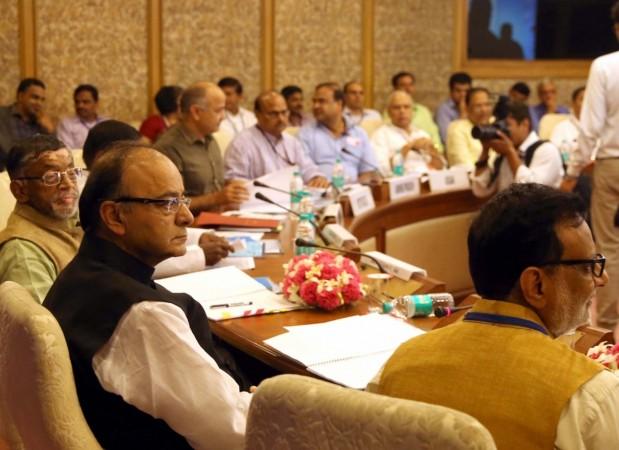
Goods and Services Tax (GST) has been a hot topic of debate from the day the concept was mooted. It seeks to abolish taxes like VAT and bring the entire taxation regime under one umbrella — a step that will simplify tax matters.
Let's have a look at 5 things you need to know about the new tax system that will be implemented from July 1.
What is GST and how does it work?
GST is one indirect tax for the whole nation, which will make India one unified common market. It is a single tax on the supply of goods and services, right from the manufacturer to the consumer.
Credits of input taxes paid at each stage will be available in the subsequent stage of value addition, which makes GST essentially a tax only on value addition at each stage.
The final consumer will thus bear only the GST charged by the last dealer in the supply chain, with set-off benefits at all the previous stages.
What are the benefits of GST?
The benefits of GST can be summarised as under:
- For business and industry
Easy compliance: A robust and comprehensive IT system would be the foundation of the GST regime in India. Therefore, all tax-payer services such as registrations, returns, payments, etc. would be available to the taxpayers online, which would make compliance easy and transparent.
Uniformity of tax rates and structures: GST will ensure that indirect tax rates and structures are common across the country, thereby increasing certainty and ease of doing business. In other words, GST would make doing business in the country tax neutral, irrespective of the choice of place of doing business.
Removal of cascading: A system of seamless tax-credits throughout the value-chain, and across boundaries of states, would ensure that there is minimal cascading of taxes. This would reduce hidden costs of doing business.
Improved competitiveness: Reduction in transaction costs of doing business would eventually lead to an improved competitiveness for the trade and industry.
Gain to manufacturers and exporters: The subsuming of major Central and state taxes in GST, complete and comprehensive set-off of input goods and services and phasing out of Central Sales Tax (CST) would reduce the cost of locally manufactured goods and services.
This will increase the competitiveness of Indian goods and services in the international market and give boost to Indian exports. The uniformity in tax rates and procedures across the country will also go a long way in reducing the compliance cost.
- For Central and state governments
Simple and easy to administer: Multiple indirect taxes at the Central and state levels are being replaced by GST. Backed with a robust end-to-end IT system, GST would be simpler and easier to administer than all other indirect taxes of the Centre and state levied so far.
Better controls on leakage: GST will result in better tax compliance due to a robust IT infrastructure. Due to the seamless transfer of input tax credit from one stage to another in the chain of value addition, there is an in-built mechanism in the design of GST that would incentivize tax compliance by traders.
Higher revenue efficiency: GST is expected to decrease the cost of collection of tax revenues of the government, and will therefore, lead to higher revenue efficiency.
- For the consumer
Single and transparent tax proportionate to the value of goods and services: Due to multiple indirect taxes being levied by the Centre and state, with incomplete or no input tax credits available at progressive stages of value addition, the cost of most goods and services in the country today are laden with many hidden taxes.
Under GST, there would be only one tax from the manufacturer to the consumer, leading to transparency of taxes paid to the final consumer.
Relief in overall tax burden: Because of efficiency gains and prevention of leakages, the overall tax burden on most commodities will come down, which will benefit consumers.
Which taxes at the Centre and State level are being subsumed into GST?
At the Central level, the following taxes are being subsumed:
a. Central Excise Duty,
b. Additional Excise Duty,
c. Service Tax,
d. Additional Customs Duty commonly known as Countervailing Duty, and
e. Special Additional Duty of Customs.
At the state level, the following taxes are being subsumed:
a. Subsuming of State Value Added Tax/Sales Tax,
b. Entertainment Tax (other than the tax levied by the local bodies), Central Sales Tax (levied by the Centre and collected by the States),
c. Octroi and Entry tax,
d. Purchase Tax,
e. Luxury tax, and
f. Taxes on lottery, betting and gambling.
How will GST be administered in India?
Keeping in mind the federal structure of India, there will be two components of GST – Central GST (CGST) and State GST (SGST). Both Centre and states will simultaneously levy GST across the value chain.
Tax will be levied on every supply of goods and services. Centre would levy and collect CGST, and states would levy and collect the SGST on all transactions within a state.
The input tax credit of CGST would be available for discharging the CGST liability on the output at each stage. Similarly, the credit of SGST paid on inputs would be allowed for paying the SGST on output. No cross utilisation of credit would be permitted.
How will a particular transaction of goods and services be taxed simultaneously under CGST and SGST?
The CGST and the SGST would be levied simultaneously on every transaction of supply of goods and services except on exempted goods and services, goods which are outside the purview of GST and the transactions which are below the prescribed threshold limits.
Further, both would be levied on the same price or value unlike state VAT which is levied on the value of the goods inclusive of Central Excise.

















